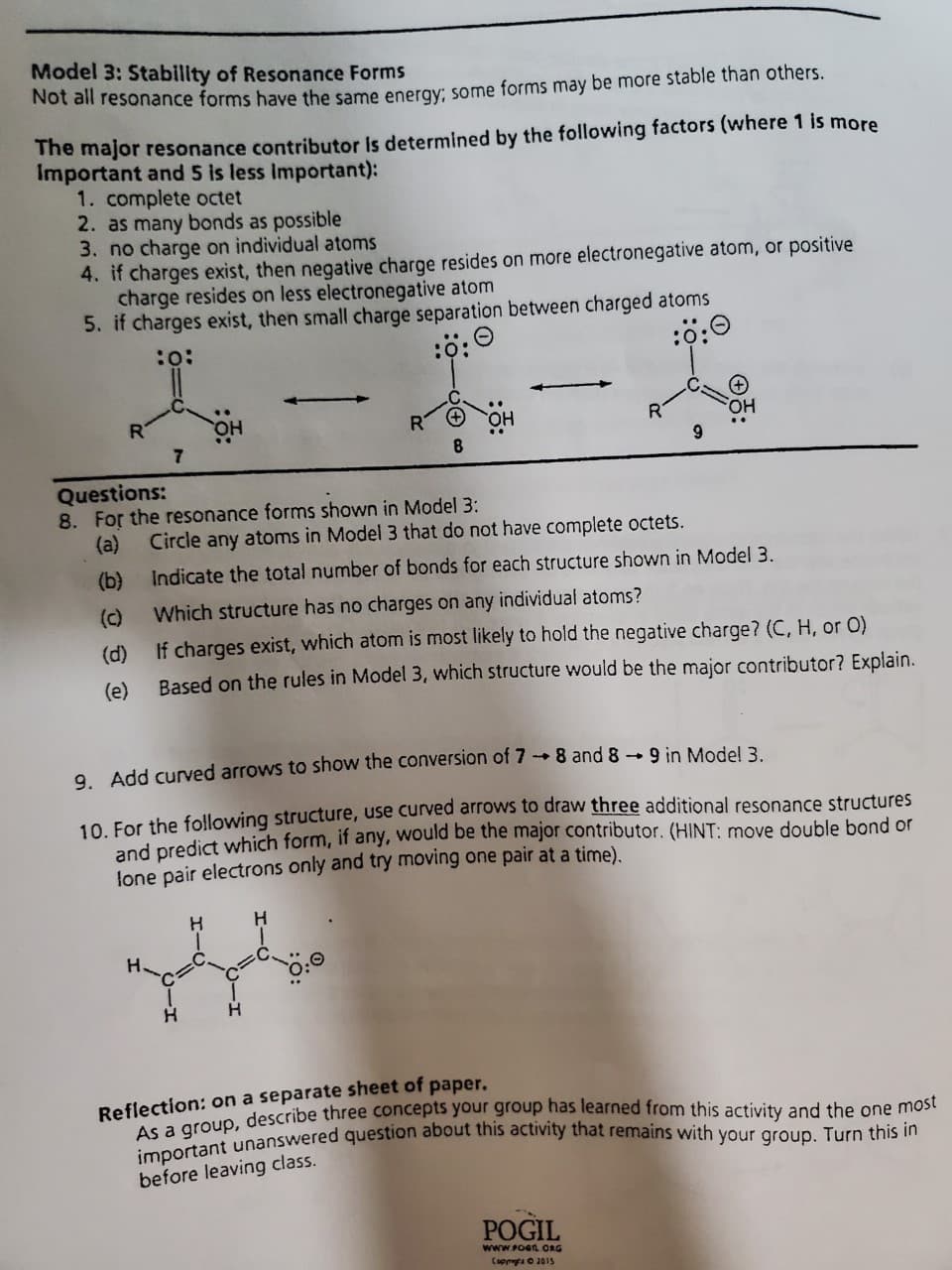Model 3: Stability of Resonance Forms Not all resonance forms have the same energy; some forms may be more stable than others. The major resonance contributor is determined by the following factors (where 1 is more Important and 5 is less important): 1. complete octet 2. as many bonds as possible 3. no charge on individual atoms 4. if charges exist, then negative charge resides on more electronegative atom, or positive charge resides on less electronegative atom 5. if charges exist, then small charge separation between charged atoms :0: R 7 H. Questions: 8. For the resonance forms shown in Model 3: (a) Circle any atoms in Model 3 that do not have complete octets. (b) Indicate the total number of bonds for each structure shown in Model 3. (c) Which structure has no charges on any individual atoms? (d) If charges exist, which atom is most likely to hold the negative charge? (C, H, or O) Based on the rules in Model 3, which structure would be the major contributor? Explain. (e) 9. Add curved arrows to show the conversion of 78 and 8 → 9 in Model 3. 10. For the following structure, use curved arrows to draw three additional resonance structures and predict which form, if any, would be the major contributor. (HINT: move double bond or lone pair electrons only and try moving one pair at a time). H R H 8 H
Electronic Effects
The effect of electrons that are located in the chemical bonds within the atoms of the molecule is termed an electronic effect. The electronic effect is also explained as the effect through which the reactivity of the compound in one portion is controlled by the electron repulsion or attraction producing in another portion of the molecule.
Drawing Resonance Forms
In organic chemistry, resonance may be a mental exercise that illustrates the delocalization of electrons inside molecules within the valence bond theory of octet bonding. It entails creating several Lewis structures that, when combined, reflect the molecule's entire electronic structure. One Lewis diagram cannot explain the bonding (lone pair, double bond, octet) elaborately. A hybrid describes a combination of possible resonance structures that represents the entire delocalization of electrons within the molecule.
Using Molecular Structure To Predict Equilibrium
Equilibrium does not always imply an equal presence of reactants and products. This signifies that the reaction reaches a point when reactant and product quantities remain constant as the rate of forward and backward reaction is the same. Molecular structures of various compounds can help in predicting equilibrium.

Step by step
Solved in 4 steps with 3 images


